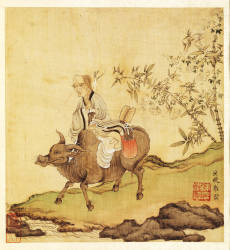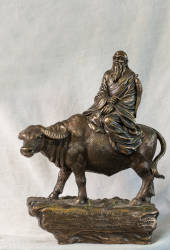老君洞
Xixia Laojun Cave - Laojundong - Tiger Cave
Useful Information

| Location: |
311 National Road, Erlangping Township, Xixia County, Nanyang City.
(33.568538, 111.649697) |
| Open: |
All year daily 8-17:30. [2021] |
| Fee: |
free. [2021] |
| Classification: |
 Karst Cave Karst Cave
 Cave Church Cave Church
|
| Light: |
 Electric Light Electric Light
 Coloured Light Coloured Light
|
| Dimension: | |
| Guided tours: | D=1h |
| Photography: | |
| Accessibility: | |
| Bibliography: | |
| Address: | Laojundong, 311 National Road, Erlangping Township, Xixia County, Nanyang City, Henan, |
| As far as we know this information was accurate when it was published (see years in brackets), but may have changed since then. Please check rates and details directly with the companies in question if you need more recent info. |
|
History
| 516 BC | Lao Tzu lives in the cave for 100 years. |
Description


老君洞 (Laojun Dong, Tiger Cave) is the name of a scenic area, a sort of park, which includes three main sights. The Laojun Cave, the 太清谷 (Taiqing Gorge) and the 野人谷 (Wild Man’s Gorge). According to legend 老子 (Lao Tzu or Laozi or Lao-Tze) once lived in this cave in seclusion. He lived here for 100 years without becoming older, writing philosophical texts and inventing Daoism. The cave is located in a lush forest with bamboos, small bridges and flowing water. A long staircase leads up to the cave, which looks exactly as the staircase in Kill Bill. The cave portal was closed by a wall and gives the first impression of a western cave church. The cave is a river cave with clear water flowing all year.
12.
Loud colors blind the eye.
Wild hunting maddens the mind.
Precious objects cause thefts.
Delicious food confuses the taste.
Beautiful sounds deafen the ear.
That’s why wise politics chooses the essentials
In all its matters
Instead of contriving impressive shows.
Lao-Tze was an ancient Chinese philosopher and writer, a semi-legendary figure, who lived probably at the same time as Confucius or probably 200 years later. He is the reputed author of the 道德经 (Tao Te Ching), a Chinese classic text, a fundamental text for both philosophical and religious Taoism. It is a set of 81 verses or poems of cryptical context, and like all good religious books, its up to interpretation. We have no idea if the modern interpretation has anything to do with his intentions. But we know that the cave made him immortal, because he was here before the red and blue lamps were installed. Today you can only get brain cancer.
Lao-Tze was a scholar who worked as the Keeper of the Archives for the royal court of Zhou. Here he read the works of the Yellow Emperor and other classics of the time. He never opened a formal school but nonetheless attracted a large number of students and loyal disciples. But Lao-Tze grew weary of the moral decay of life in Chengzhou and noted the kingdom’s decline. He went west to live as a hermit in the unsettled frontier at the age of 80. At the western gate of the city, he was recognized by the guard Yinxi, who asked the old master to record his wisdom for the good of the country before he would be permitted to pass. The text Lao-Tze wrote was the Tao Te Ching. The guard was so touched by this work that he became a disciple and left with Lao-Tze, never to be seen again.
Lao-Tze is often depicted riding on a buffalo, such a statue was erected right in front of the cave. According to Chinese legend, Lao-Tze left China for the west on a water buffalo. Some say he reached India and was the teacher of Siddartha Gautama, the Buddha. Others say it was him who became known in India under the name Siddartha Gautama.
 Search DuckDuckGo for "Xixia Laojun Cave"
Search DuckDuckGo for "Xixia Laojun Cave" Google Earth Placemark
Google Earth Placemark Xixia Laojun Cave 老君洞 (visited: 27-AUG-2021)
Xixia Laojun Cave 老君洞 (visited: 27-AUG-2021) Index
Index Topics
Topics Hierarchical
Hierarchical Countries
Countries Maps
Maps